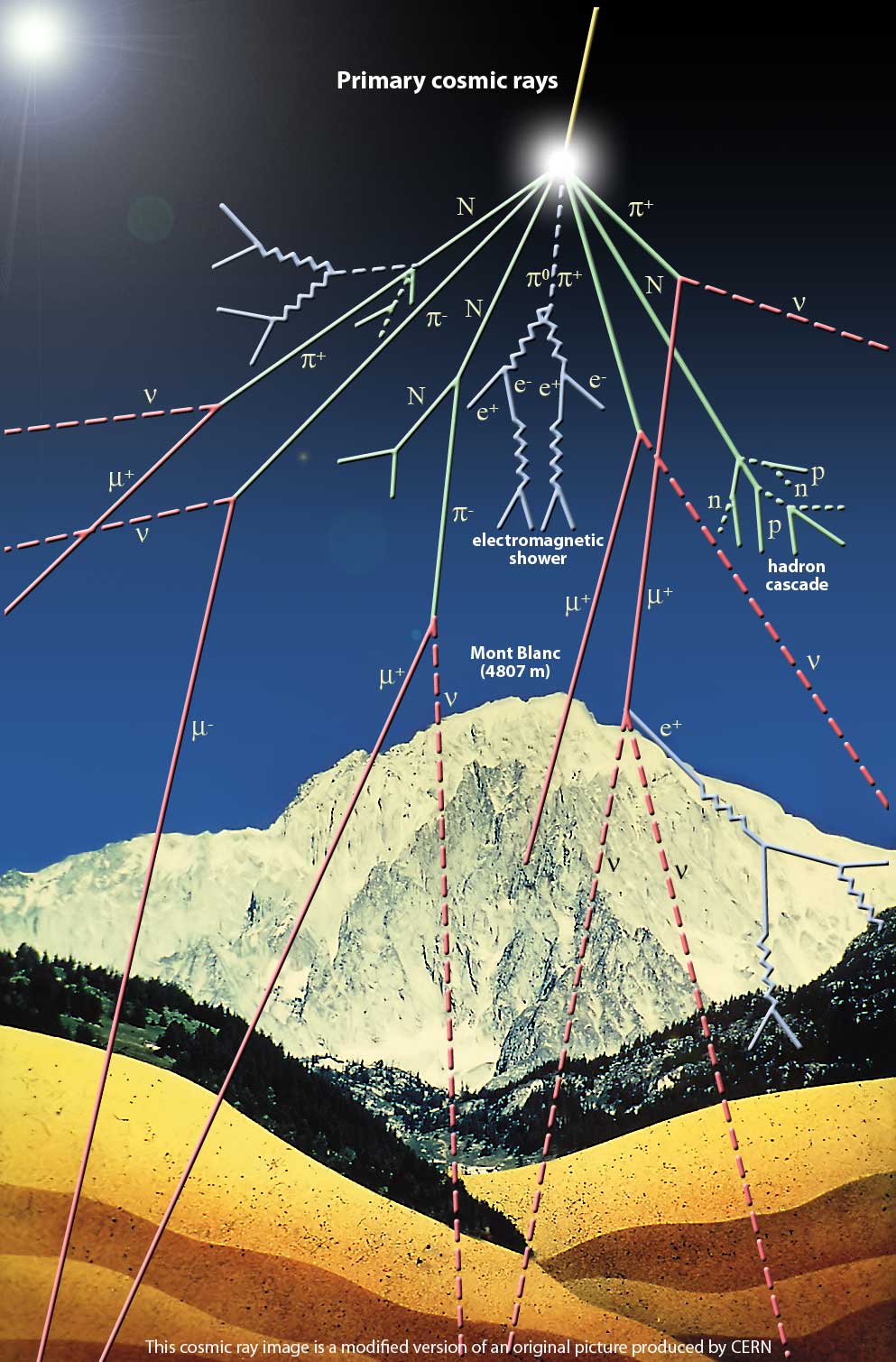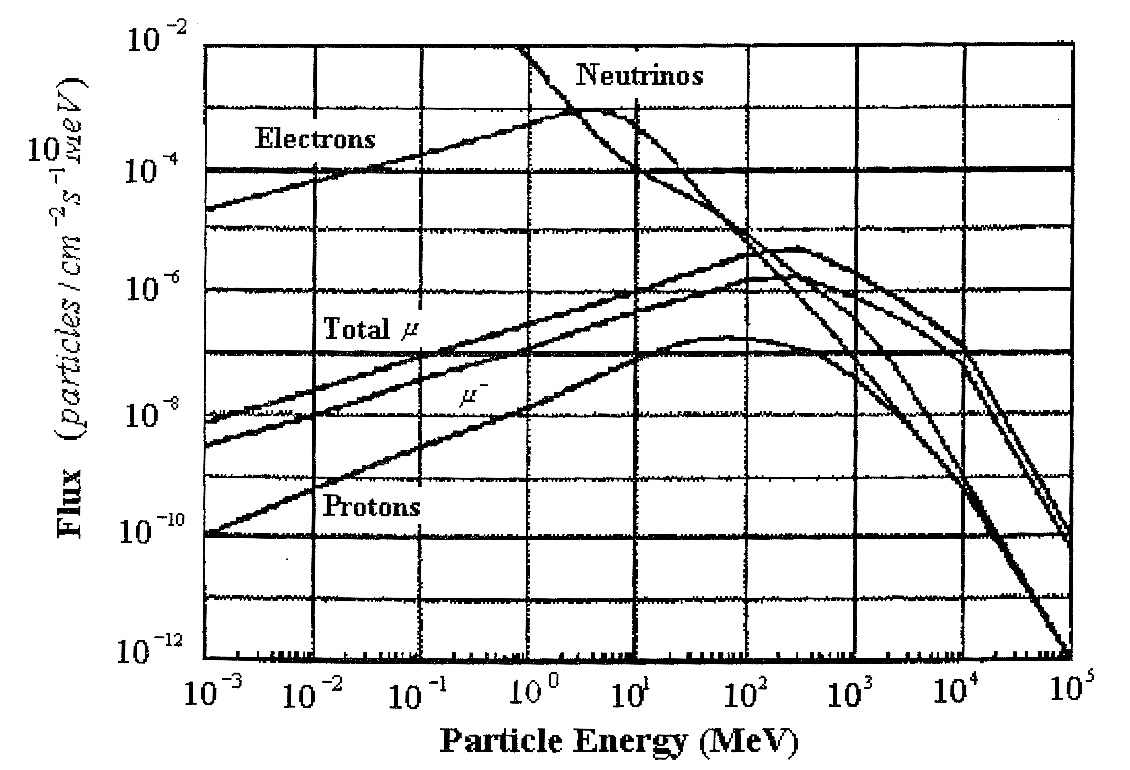Difference between revisions of "Cosmics for High School Teachers"
m |
|||
| Line 43: | Line 43: | ||
==How do we detect cosmic rays== | ==How do we detect cosmic rays== | ||
| + | |||
| + | |||
| + | [[June,18,2007 Teachers in lab]] | ||
Revision as of 17:29, 18 June 2007
The following is intended for an audience of High school teachers and their students.
What is a Cosmic Ray
Cosmic rays are particles originating outside the earth which hit the Earth's atmosphere. Cosmic rays are made up of all the elements in the periodic table. 89% of the particles are protons, 10% are alpha particles (a helium atom without its electrons), and 1% are heavier elements.
Galactic and Solar
The term cosmic rays usually refers to Galactic cosmic rays that are further divided into two categories; either galactic or extragalactic. Galactic cosmic rays are all particles which enter our solar system from outside. Extragalactic cosmic rays flow into our galaxy having energies beyond 10e15 eV (amount of energy your body creates in 1/1000 of a second). They are very rare with only 1 entering a square meter on the earth's surface per year.
Solar cosmic rays originate from the sun and have energies between 10 to 100 kilo-electron volts (keV = 1.6 e-16 Joules = amount of heat your body produces in 1e-18 seconds [1/1000 femto-seconds]).
Primary and Secondary cosmic rays
Primary cosmic rays are galactic cosmic rays which can interact with stellar matter and the Earth's atmosphere. The interaction of the primary cosmic rays with the Earth's atmosphere produce secondary cosmic rays. The secondary particles produced are pions, muons, gamma rays, neutrinos, and neutrons.

The flux of cosmic ray particles as a function of their energy. The flux for the lowest energies (yellow zone) are mainly attributed to solar cosmic rays, intermediate energies (blue) to galactic cosmic rays, and highest energies (purple) to extragalactic cosmic rays.( S. Swordy, The energy spectra and anisotropies of cosmic rays, 2001, Space Science Reviews 99, pp85–94)
At sea level, cosmic rays are mostly composed of MeV energy electrons and 100 MeV energy muons. The proton flux is more than 10,000 times smaller than the electron flux.(J. Ziegle, NIM, vol 191, (1981), 419
File:CosmicFluxVsEnergySeaLevel.jpg
Oh-My-God- Cosmic rays
About 15 protons having an energy of 10e20 eV have been seen by the University of Utah's Fly's Eye Cosmic Ray Detector. ( the first publication Physical Review Letters, 22 November 1993, http://arxiv.org/abs/astro-ph/9410069)
Particles of this energy could light up a 40 Watt light bulb for a whole second.
At a January 12, 2005 conference of the American Astronomical Society, particle physicist Glennys Farrar presented a paper tracing five similar very-high-energy cosmic rays, all of which were detected between 1993 and 2003, to a pair of colliding galaxy clusters 450 million light-years from Earth. Farrar speculated that the clusters' powerful magnetic fields could become warped in the collision, accelerating charged particles to the extreme energies astronomers have observed.
In June 20,2006, the NSF provided $2.4 million to upgrade the "telescope" by relocating it to a larger area and install more scintillators designed to improve is cosmic ray detection sensitivity an order of magnitude. The "telescope" will be composed of a ground array of 564 table-shaped scintillation detectors, each about 3 feet tall and 6-by-10-feet wide. The scintillation detectors will be spread in a grid over an 18-mile-by-22-mile area west of Delta. The BLM right-of-way grant/temporary use permit will allow scientists to build the central laser facility and install 460 of the scintillation detectors on BLM land, which covers 80 percent of the observatory site.
[edit]
How are Cosmic Rays created
It is currently believed that Galactic cosmic rays are the result of supernova explosions which happen about once every 50 years in our galaxy. Galactic cosmic rays spend about 10 million years roaming the galaxy due to the magnetic fields of stellar objects before they leave the galazy into intergallactic space becoming extragalactic cosmic rays for planets outside our galaxy.
